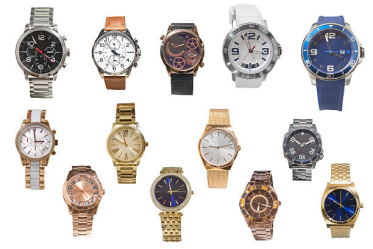Types of Material Used for Making Watch Cases
2571
11/04/2023

A lot comes to our mind when considering a timepiece. Complications, features and styles are among the top factors people think about. However, it is essential to know what the watch itself is made of. Nowadays, watch manufacturers on all levels have spared no effort to separate themselves from competitors by releasing various watches with different case materials. Therefore, we are spoiled for choices regarding watch case materials. Now, let’s delve into this guide for common materials that go into making high-quality watches. More information regarding each material can be found below.

Different Watch Case Materials
If you are reading this article, you probably already have developed a love for watches. But you should know that there are many factors to consider when buying a watch. Below we have broken down and explained the various case materials for watches so that you can make a wise decision when purchasing your timepiece.
Stainless Steel
If you are looking for a watch, you are likely to see a bunch of steel models, as stainless steel is the most ubiquitous metal used in watch cases. There are multiple types of stainless steel according to the purity, while 316L stainless steel is the most frequent at present. This iron-based alloy makes stainless steel resistant to corrosion and heat, so the case will not warp even when exposed to high temperatures. In addition, one big reason for its popularity is durability, so this type of watch is not easily affected by moisture or sweat. Furthermore, watches made from stainless steel offer high quality for an affordable price. This durable and long-lasting material is a go-to choice for most people.
Titanium
Famous for its robustness, titanium is an excellent material for a watch case, especially in tool watches. Titanium is a hard-wearing and durable material. Due to its inert chemical nature, it is hypoallergenic and ideal for watchmaking. Its material’s strength can strive to impact against a fall and is also lighter than stainless steel since titanium is less dense than stainless steel. Titanium may not make sense on paper, but once on the wrist, there is no word to express your feeling. However, the only possible downside is that the titanium has a dull gray appearance that someone finds less appealing.

Aluminum
Aluminum was once seldom used for watch cases as it isn’t sturdy as steel and can easily be damaged. On the contrary, aluminum seems perfect for watchmaking with the advantages of resisting corrosion, having high reflectivity to certain electromagnetic waves and being lightweight. Additionally, aluminum is so versatile that various advanced techniques, such as sandblasting and polishing, can be applied easily. Synthetic aluminum as black graphite aluminum has been used as watch case material for smart watch d. With so many merits to offer, more and more manufacturers will look at aluminum as their default choice for watch cases.
Ceramic
Ceramics is a material that is neither a metal nor a polymer. It is a reasonably new material in the watchmaking industry. Lighter in weight than most commonly used metals, ceramic can be colored in various ways to achieve personal aesthetics that are impossible with traditional metallic alloys. This material is comfortable to wear, and a prevalent choice for luxury watches due to its durable shine. However, it is not as resistant as steel, so you must be very careful when wearing ceramic timepieces.
Summary
Material is the basis of watches and plays an essential role in the appearance and function of every timepiece. We are used to seeing some highly impressive materials on our wrists. The material dictates the durability, style and comfort. The most common watch case material is stainless steel. However, gold, ceramic, titanium and others are also increasingly enjoying their heyday. Some materials are more precious than others, so make sure you make the right choice before payment.
